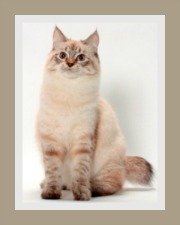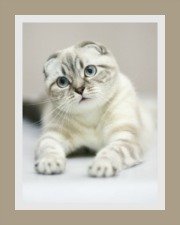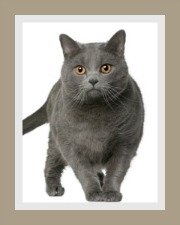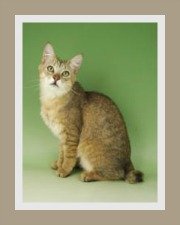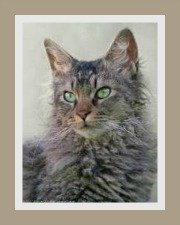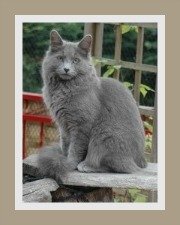Kurilian Bobtail Cat
Breed Profile and Facts
The Kurilian Bobtail cat with its fluffy, short-tail originates from a cluster of islands called the Kurile Islands.
These islands separate the North Pacific Ocean from the Sea of Okhotsk.
There are over 50 islands in this volcanic archipelago and whilst there is a dispute between Russia and Japan regarding the ownership, all the islands would appear to fall under Russian jurisdiction.
This Russian / Japanese 'connection'
is an interesting one, as it raises the question as to whether the
Kurilian is an ancestor of the Japanese Bobtail cat?
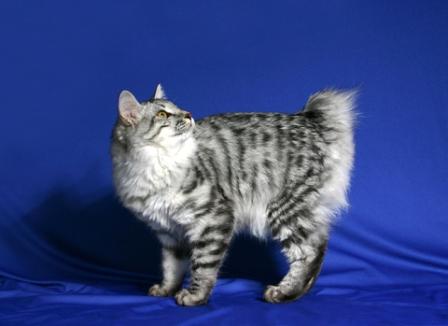
about the kuril bobtail history
The wild Kurilian Bobtail cat roamed these islands for decades prior to becoming domesticated.
They were first identified in the 1950's and then found their way to the Russian mainland in the 1980's. It is believed that scientists or military personnel brought them to Russia.
They were first shown at Russian cat shows in the 1990's, recognized by the World Cat Federation in 1995, FiFe (Europe) and The International Cat Association (TICA) in 2003. At this stage, the Cat Fanciers Association (CFA) does not recognize this cat breed.
The
Kurilian Bobtail cat is a rare cat breed beyond Russia. This
breed is also known as the Kuril Bobtail or the Kunashir Cat.
about the pom-pom tail
This Russian bobtail is a natural breed, meaning that humans played no part in its development.
The Kurilian's short tail is as a result of a genetic mutation.
Effectively this means that if a mating occurs between a 'normal-long-tailed' domestic cat and the Kurilian, all the offspring will have shortened tails - some angulated and some with the distinctive pom-pom tail. (As a matter of interest there are no permissible outcrosses)
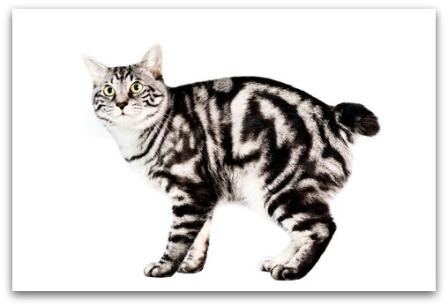
tail description
The tail must be a minimum of 2 vertebrae long and a cat with no tail is unacceptable.
The tail should have one or more curves or kinks and it can be either flexible or rigid or both. (The base of the tail should always be flexible).
The ideal tail length (without fur) is between 0.59 inches (1.5 cm) to 3.1 inches (8 cm).
The tail can face in any direction and the fur on the tail can appear as a brush or a pom-pom.
The Kuril Bobtail's cute tail is described as a whisk, a snag or a spiral.
kurilian bobtail general features
The Kurilian is a large cat with a somewhat 'wild' appearance. It has firm, well developed muscles and a substantial and solid bone structure.
It has a slightly arched back and its rump appears higher than its shoulders. Its medium length legs complement the body and are strong and solid with prominent thighs.
The Kurilian Bobtail cat has a large head with rounded contours, a broad straight nose, a well developed and wide chin and muzzle.
It has large eyes that are walnut shaped i.e. rounded at the bottom and oval at the top.
Eye color has no relation to coat color, but the color must be brilliant and clear. Vans, harlequins and white cats may have odd eyes (1 brown and 1 blue) or blue eyes.
To complete the picture, its ears are erect and the tips are rounded and tilted slightly forward.
the kunashir coat
Its coat comes in 2 lengths:
Semi-Longhaired Kurilian
The semi-long fur lies flat with very little undercoat and is fine and silky to the touch. The tail coat is plumed and full. Cats with a ruff, toe tufts and britches are preferred.
Shorthaired Kurilian
The short fur lies flat, has very little undercoat and is also fine and silky to the touch. The fur on the tail will be the same length as the rest of the body.
Apart from colorpoint, cinnamon (fawn), chocolate (lilac) which are not permitted, you can expect to find the Kurilian in all traditional, naturally occurring colors and patterns - solids, tortoiseshell or tabby.
kurilian bobtail information
ideal home | ideal family
The Kurilian Bobtail cat is best suited to outdoor living. Outdoor does not mean pounding the pavements, but rather a safe and enclosed garden that is escape-proof.
They can adapt to
indoor living, but it's important to provide a suitable cat- friendly
environment for them as they do like space and prefer not to be confined in a small apartment.
They make great companions and get on well with older children and other pets.
kurilian bobtail personality and temperament
The Kurilian Bobtail cat is a well balanced, intelligent cat that is easily trained.
They have excellent natural hunting skills and make excellent mousers.
They are also known for their love of water.
Kurilians are gentle, non-aggressive cats - easy going and affectionate. They love a warm lap and a cuddle.
As they are quite sociable, they do not tolerate solitude well. Their inquisitive nature means they will always be at your side and want to be involved in all activities.
They may observe all the household activities perched on the highest point they can find.
Playful, friendly, active and outgoing - that's the Kurilian.
kurilian bobtail cat care
Weekly grooming for shorthair cats and twice a week for longhaired cats is recommended.
They are low maintenance cat breeds. We have excellent cat care information with tips on cat grooming, do take the tour.
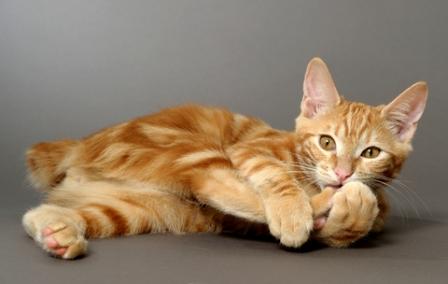
Kurilian Bobtail Kitten
health concerns
This is a healthy robust and hardy cat breed with few if any health concerns.
A balanced diet and exercise and an annual check-up at vaccination-time will keep your Kurilian Bobtail cat in good health.
diet | average weight of the kurilian bobtail
Your kitty needs the best cat food you can afford. There are so many options - dry kibbles, canned cat food and of course raw cat food.
Your cat
should always have access to fresh drinking water.
Average Cat Weight
On average these cats weigh between 3.6 - 6.8 kg (8.0 - 15.0 lbs) ; As with most cat breeds, the females are smaller than the males.
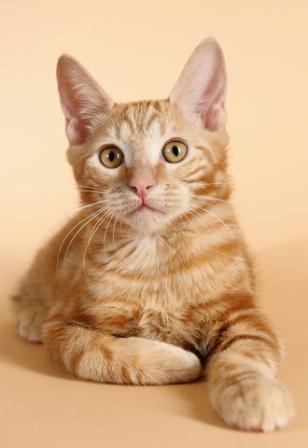
life expectancy of the kurilian bobtail
The average life span is 15 + years - long life expectancy. The breed is slow to mature.
Related Pages:
Top of Kurilian Bobtail Cat Page
Return to Domestic Cats > Types of Cats
search our site
please like us
share our site
recommend on google
rare cats
